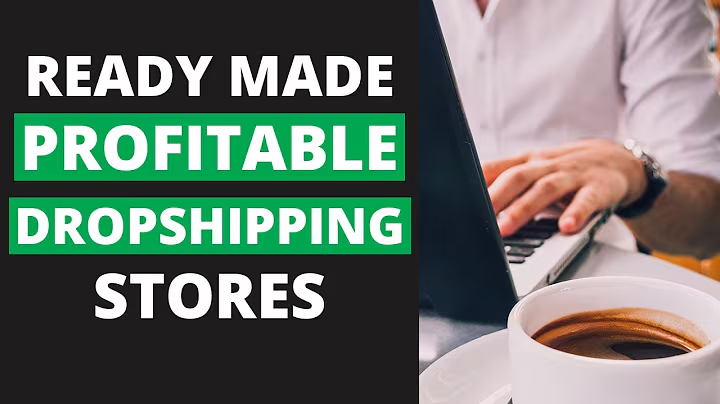Choosing between Dropshipping and Order Fulfillment
Table of Contents:
- Introduction
- Understanding dropshipping
2.1 What is Dropshipping?
2.2 How Does Dropshipping Work?
2.3 Pros and Cons of Dropshipping
- Exploring Order Fulfillment Companies
3.1 What are Order Fulfillment Companies?
3.2 How Do Order Fulfillment Companies Work?
3.3 Pros and Cons of Order Fulfillment Companies
- Dropshipping vs Order Fulfillment
4.1 Key Differences between Dropshipping and Order Fulfillment
4.2 Which is Better for Your Business?
- Starting a Dropshipping Business
5.1 Choosing a Niche
5.2 Sourcing Products
5.3 Building an Online Store
5.4 Marketing Your Store
- Starting an Order Fulfillment Business
6.1 Choosing a Concept or Niche
6.2 Sourcing Wholesale Products
6.3 Building an Online Store
6.4 Onboarding with a Fulfillment Company
6.5 Marketing Your Store
- Conclusion
Article:
Dropshipping vs Order Fulfillment: Which is Better for Your Business?
Introduction
When it comes to running an ecommerce business, there are two popular strategies for handling product fulfillment: dropshipping and order fulfillment through third-party companies. Both approaches have their own benefits and drawbacks, and choosing the right method for your business can have a significant impact on its success. In this article, we will explore the differences between dropshipping and order fulfillment, discuss the pros and cons of each approach, and provide guidance on how to get started with either option.
Understanding Dropshipping
-
What is Dropshipping?
Dropshipping is a fulfillment method where retailers partner with suppliers who handle inventory storage, order processing, and shipping directly to customers. Unlike traditional ecommerce models, dropshipping eliminates the need for retailers to stock and manage inventory themselves.
-
How Does Dropshipping Work?
The dropshipping process starts with retailers building an online store and sourcing products from dropshipping suppliers. Retailers list these products on their stores without actually purchasing any inventory. When a customer places an order, the retailer forwards the order to the supplier, who fulfills the order by packaging and shipping the product to the customer.
-
Pros and Cons of Dropshipping
Pros:
- Low startup costs: Dropshipping requires minimal investment compared to traditional ecommerce models.
- Geographic independence: Retailers can operate from anywhere without being tied to a specific location or storage warehouse.
- Flexible inventory: Dropshipping allows easy adaptation to market trends and reduces the risk of holding excess inventory.
Cons:
- Reduced margins: Retailers typically have higher wholesale costs in dropshipping, leading to lower profit margins compared to traditional ecommerce.
- Intense competition: Due to the accessibility of dropshipping, there can be a high level of competition in terms of pricing and advertising.
- Lack of quality control: Retailers have limited control over product quality and shipping processes, leading to potential customer service issues.
Exploring Order Fulfillment Companies
-
What are Order Fulfillment Companies?
Order fulfillment companies specialize in storing inventory, processing orders, and shipping packages on behalf of ecommerce retailers. They provide retailers with the infrastructure and expertise to handle fulfillment tasks, allowing them to focus on other aspects of their business.
-
How Do Order Fulfillment Companies Work?
In the order fulfillment model, retailers purchase inventory in bulk from wholesalers or manufacturers and have it delivered to a third-party fulfillment company. The retailer lists the merchandise on their online store, and when a customer places an order, the fulfillment company picks, packs, and ships the product directly to the customer.
-
Pros and Cons of Order Fulfillment Companies
Pros:
- Higher margins: Retailers can achieve greater profit margins as they own the inventory and purchase it at wholesale prices.
- Reduced overhead costs: Outsourcing fulfillment saves on expenses associated with setting up and maintaining an in-house operation.
- Simple shipping and fast delivery: Fulfillment companies offer discounted shipping rates and efficient delivery times.
Cons:
- Capital requirement: Starting a traditional ecommerce business with order fulfillment involves significant upfront investment and financial risk.
- Time investment: Operating a traditional ecommerce business generally requires more time and structure compared to dropshipping.
- Longer return on investment: Generating returns may take longer due to initial capital investment and overhead costs.
Dropshipping vs Order Fulfillment
-
Key Differences between Dropshipping and Order Fulfillment
- Inventory ownership: In dropshipping, retailers don't own the inventory, while in order fulfillment, retailers purchase and own the merchandise.
- Operational control: Dropshipping offers less control over profit margins, product quality, packaging, and fulfillment details compared to order fulfillment.
- Risk and impact: Dropshipping carries less financial risk and provides flexibility to experiment, whereas order fulfillment involves higher risks and commitments.
- Business relationship: Dropshipping involves a symbiotic relationship between retailers and suppliers, while order fulfillment maintains a linear relationship between retailers and fulfillment companies.
-
Which is Better for Your Business?
- Dropshipping is ideal for e-commerce beginners, part-time sellers, entrepreneurs on a budget, and content creators looking to monetize their online presence.
- Order fulfillment through third-party companies suits businesses with existing inventory, those seeking scalability, brick-and-mortar retailers expanding online, and retailers with seasonal fluctuations.
Starting a Dropshipping Business
-
Choosing a Niche
To start a dropshipping business, select a niche or product category that aligns with your interests, market demand, and target audience. Conduct thorough market research to identify profitable opportunities.
-
Sourcing Products
Source products from dropshipping marketplaces or consider establishing direct partnerships with suppliers for higher profitability and reduced competition.
-
Building an Online Store
Create your own website or use e-commerce platforms like Shopify to build your online store. Customize product listings, descriptions, and prices based on wholesale costs and desired profit margins.
-
Marketing Your Store
Implement marketing strategies such as social media advertising, search engine optimization, and influencer collaborations to drive traffic and attract customers to your store.
Starting an Order Fulfillment Business
-
Choosing a Concept or Niche
Similar to dropshipping, choose a concept or niche that suits your market expertise and target audience. Research potential wholesalers, manufacturers, or directory services for sourcing wholesale products.
-
Sourcing Wholesale Products
Source inventory in bulk from wholesalers or manufacturers. Consider attending trade shows or using wholesale marketplaces like Alibaba to find suppliers.
-
Building an Online Store
Just like with dropshipping, create an online store or utilize existing marketplaces or social media channels to showcase and sell your products.
-
Onboarding with a Fulfillment Company
Select a fulfillment company that aligns with your business requirements and onboards with their services. Ensure they offer scalability, reasonable fees, and efficient order processing systems.
-
Marketing Your Store
Implement effective marketing strategies to promote your online store, such as search engine optimization, targeted advertising, and customer retention programs.
Conclusion
Whether you choose dropshipping or order fulfillment with third-party companies, both approaches offer unique advantages and considerations for your e-commerce business. Assess your available resources, financial capabilities, time investment, and market confidence to determine the best strategy for your specific needs. Keep in mind that success rates vary, but with careful planning and execution, you can thrive in the ever-evolving world of online retail. Remember, the ultimate goal is to provide exceptional customer experiences and generate sustainable growth for your business.



















